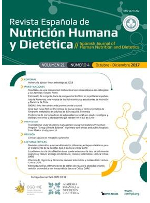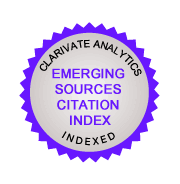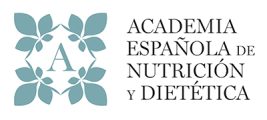Consumption of ultra-processed foods and relationship with sodium and potassium excretion: a cross-sectional study
DOI:
https://doi.org/10.14306/renhyd.28.2.2140Keywords:
Food processed, Sodium, PotassiumAbstract
Introduction: Higher consumption of ultra-processed foods (UPF) had been associated with higher risk of non-communicable diseases (NCD) and NCD-promoting nutrient profile such as high sodium content and low potassium content. The objective of the study was to evaluate the level of food processing according to the NOVA classification and its relationship with sodium and potassium intake estimated by 24-hour urinary excretion.
Methods: This is a cross-sectional study. Data collection included 107 workers from a public university (51.4% female; mean age 47 years) participating in an iMC Salt clinical trial). A 24-hour urinary collection was used to estimate sodium and potassium intake, validated by the creatinine coefficient. The corresponding 24-hour dietary recall was used to assess food intake and foods were categorized using the NOVA classification according to the degree and purpose of processing, into four groups. Nutri-score was also used to categorize UPF and provide more information about the nutritional quality of products.
Results: The largest energy contribution came from the group of unprocessed or minimally processed foods (51.6%), followed by UPF (24%), processed foods (21.8%) and processed culinary ingredients (2.6%). Individuals with the lowest caloric contribution of the consumption of UPF had higher average values of potassium (K) intake (1438 vs 1136 mg/1000kcal; p=0.007), as individuals with the highest weight contribution of the consumption of unprocessed or minimally processed foods (1434 vs 1109 mg/1000kcal; p=0.010). For sodium (Na) intake no significant results were found between individuals with the lowest and the highest consumption of each NOVA group.
Conclusions: Higher consumption of fresh or minimally processed foods and lower UPF intake were associated with higher K intake values. On the other hand, higher UPF intake was not associated with higher Na intake values.
Funding: This work was supported by Fundação para a Ciência e Tecnologia by Grant POCI-01-0145-FEDER-029269) and by the European Regional Development Fund (ERDF) through NORTE 2020 (Northern Regional Operational Program 2014/2020) - NORTE-01-0145-FEDER-072687.
References
(1) Monteiro CA, Cannon G, Levy R, Moubarac J-C, Jaime P, Paula Martins A, et al. NOVA. The star shines bright. World Nutrition. 2016;7(1-3):28-38.
(2) Monteiro CA, Moubarac JC, Cannon G, Ng SW, Popkin B. Ultra-processed products are becoming dominant in the global food system. Obes Rev. 2013;14 Suppl 2(S2):21-8, doi: 10.1111/OBR.12107.
(3) Moubarac J-C, Parra DC, Cannon G, Monteiro CA. Food Classification Systems Based on Food Processing: Significance and Implications for Policies and Actions: A Systematic Literature Review and Assessment. Curr Obes Rep. 2014;3(2):256-72, doi: 10.1007/S13679-014-0092-0.
(4) Monteiro CA, Cannon G, Moubarac JC, Levy RB, Louzada MLC, Jaime PC. The UN Decade of Nutrition, the NOVA food classification and the trouble with ultra-processing. Public Health Nutr. 2018;21(1):5-17, doi: 10.1017/S1368980017000234.
(5) Costa Louzada ML, Ricardo CZ, Steele EM, Levy RB, Cannon G, Monteiro CA. The share of ultra-processed foods determines the overall nutritional quality of diets in Brazil. Public Health Nutr. 2018;21(1):94-102, doi: 10.1017/S1368980017001434.
(6) Moubarac JC, Batal M, Louzada ML, Martinez Steele E, Monteiro CA. Consumption of ultra-processed foods predicts diet quality in Canada. Appetite. 2017;108:512-20, doi: 10.1016/J.APPET.2016.11.006.
(7) de Araújo TP, de Moraes MM, Magalhães V, Afonso C, Santos C, Rodrigues SSP. Ultra-Processed Food Availability and Noncommunicable Diseases: A Systematic Review. Int J Environ Res Public Health. 2021;18(14), doi: 10.3390/IJERPH18147382.
(8) Lim SS, Vos T, Flaxman AD, Danaei G, Shibuya K, Adair-Rohani H, et al. A comparative risk assessment of burden of disease and injury attributable to 67 risk factors and risk factor clusters in 21 regions, 1990-2010: a systematic analysis for the Global Burden of Disease Study 2010. Lancet. 2012;380(9859):2224-60, doi: 10.1016/S0140-6736(12)61766-8.
(9) Srour B, Fezeu LK, Kesse-Guyot E, Allès B, Méjean C, Andrianasolo RM, et al. Ultra-processed food intake and risk of cardiovascular disease: prospective cohort study (NutriNet-Santé). BMJ. 2019;365, doi: 10.1136/BMJ.L1451.
(10) Mendonça R, Souza Lopes AC, Pimenta AM, Gea A, Martinez-Gonzalez MA, Bes-Rastrollo M. Ultra-Processed Food Consumption and the Incidence of Hypertension in a Mediterranean Cohort: The Seguimiento Universidad de Navarra Project. Am J Hypertens. 2017;30(4):358-66, doi: 10.1093/AJH/HPW137.
(11) He FJ, Li J, MacGregor GA. Effect of longer term modest salt reduction on blood pressure: Cochrane systematic review and meta-analysis of randomised trials. BMJ. 2013;346(7903), doi: 10.1136/BMJ.F1325.
(12) Aburto NJ, Hanson S, Gutierrez H, Hooper L, Elliott P, Cappuccio FP. Effect of increased potassium intake on cardiovascular risk factors and disease: systematic review and meta-analyses. BMJ. 2013;346(7903), doi: 10.1136/BMJ.F1378.
(13) Iwahori T, Miura K, Ueshima H, Tanaka-Mizuno S, Chan Q, Arima H, et al. Urinary sodium-to-potassium ratio and intake of sodium and potassium among men and women from multiethnic general populations: the INTERSALT Study. Hypertens Res. 2019;42(10):1590-8, doi: 10.1038/S41440-019-0263-1.
(14) Gonçalves C, Silva-Santos T, Abreu S, Padrão P, Graça P, Oliveira L, et al. Innovative equipment to monitor and control salt usage when cooking at home: iMC SALT research protocol for a randomised controlled trial. BMJ Open. 2020;10(5), doi: 10.1136/BMJOPEN-2019-035898.
(15) Ljungman S, Granerus G. The evaluation of kidney function in hypertensive patients. In: Larah JH, Brenner BM. Hypertension: pathophysiology, diagnosis, and management. New York: Raven Press. 1995.
(16) Marques M, Pinho O, de Almeida MDV. Ingredientes e valor nutricional de porções do Manual de Quantificação de Alimentos. Revista de Alimentação Humana 5(1): 37-58, 1999.
(17) Instituto Nacional de Saúde. Tabela de Composição de Alimentos. 2007. Available from: http://www.insa.pt/.
(18) Santé Publique France. Nutri-Score frequently asked questions scientific & technical. 2021. Available from: https://www.santepubliquefrance.fr/en/nutri-score.
(19) Open Food Facts. 2024. Available from: https://world.openfoodfacts.org/.
(20) Santé Publique France. Nutri-Score calculation tool. 2024. Available from: https://www.santepubliquefrance.fr/en/nutri-score.
(21) van der Bend DLM, van Eijsden M, van Roost MHI, de Graaf K, Roodenburg AJC. The Nutri-Score algorithm: Evaluation of its validation process. Front Nutr. 2022;9, doi: 10.3389/FNUT.2022.974003.
(22) Polonia J, Martins L, Pinto F, Nazare J. Prevalence, awareness, treatment and control of hypertension and salt intake in Portugal: changes over a decade. The PHYSA study. J Hypertens. 2014;32(6):1211-21, doi: 10.1097/HJH.0000000000000162.
(23) Vandevijvere S, De Ridder K, Fiolet T, Bel S, Tafforeau J. Consumption of ultra-processed food products and diet quality among children, adolescents and adults in Belgium. Eur J Nutr. 2019;58(8):3267-78, doi: 10.1007/S00394-018-1870-3.
(24) Nardocci M, Leclerc BS, Louzada ML, Monteiro CA, Batal M, Moubarac JC. Consumption of ultra-processed foods and obesity in Canada. Can J Public Health. 2019;110(1):4-14, doi: 10.17269/S41997-018-0130-X.
(25) Cattafesta M, Petarli GB, Zandonade E, de Paula Alves Bezerra OM, Ribeiro de Abreu SM, Salaroli LB. Energy contribution of NOVA food groups and the nutritional profile of the Brazilian rural workers’ diets. PLoS One. 2020;15(10), doi: 10.1371/JOURNAL.PONE.0240756.
(26) Lopes C, Torres D, Oliveira A, Severo M, Alarcão V, Guiomar S, et al. Inquérito Alimentar Nacional e de Atividade Física, IAN-AF 2015-2016: Relatório metodológico Parte I. 2017.
(27) Okuda N, Okayama A, Miura K, Yoshita K, Miyagawa N, Saitoh S, et al. Food Sources of Dietary Potassium in the Adult Japanese Population: The International Study of Macro-/Micronutrients and Blood Pressure (INTERMAP). Nutrients. 2020; 12(3):787, doi: 10.3390/nu12030787.
(28) Górska-Warsewicz H, Rejman K, Laskowski W, Kowalcze K. Food Sources of Potassium in the Average Polish Diet. Nutrients. 2019;11(12), doi: 10.3390/NU11122905.
(29) Kim H, Hu EA, Rebholz CM. Ultra-processed food intake and mortality in the USA: results from the Third National Health and Nutrition Examination Survey (NHANES III, 1988-1994). Public Health Nutr. 2019;22(10):1777-85, doi: 10.1017/S1368980018003890.
(30) Rico-Campà A, Martínez-González MA, Alvarez-Alvarez I, De Deus Mendonça R, De La Fuente-Arrillaga C, Gómez-Donoso C, et al. Association between consumption of ultra-processed foods and all cause mortality: SUN prospective cohort study. BMJ. 2019;365, doi: 10.1136/BMJ.L1949.
(31) Costa Louzada ML da C, Martins APB, Canella DS, Baraldi LG, Levy RB, Claro RM, et al. Ultra-processed foods and the nutritional dietary profile in Brazil. Rev Saude Publica. 2015;49, doi: 10.1590/S0034-8910.2015049006132.
(32) Rauber F, Louzada ML da C, Steele EM, Millett C, Monteiro CA, Levy RB. Ultra-Processed Food Consumption and Chronic Non-Communicable Diseases-Related Dietary Nutrient Profile in the UK (2008−2014). Nutrients. 2018;10(5), doi: 10.3390/NU10050587.
(33) Moubarac JC, Martins APB, Claro RM, Levy RB, Cannon G, Monteiro CA. Consumption of ultra-processed foods and likely impact on human health. Evidence from Canada. Public Health Nutr. 2013;16(12):2240-8, doi: 10.1017/S1368980012005009.
Downloads
Published
How to Cite
Issue
Section
License
Copyright (c) 2020 Inês Anjos, Tânia Silva-Santos, Pedro Moreira, Patrícia Padrão, Olívia Pinho, Carla Gonçalves

This work is licensed under a Creative Commons Attribution-NonCommercial-ShareAlike 4.0 International License.











